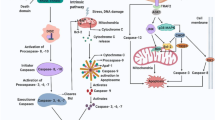Abstract:
The haspins constitute a newly defined protein family containing a distinctive C-terminal eukaryotic protein kinase domain and divergent N termini. Haspin homologues are found in animals, plants and fungi, suggesting an origin early in eukaryotic evolution. Most species have a single haspin homologue. However, Saccharomyces cerevisiae has two such genes, while Caenorhabditis elegans has at least three haspin homologues and approximately 16 haspin-related genes. Mammalian haspin genes have features of retrogenes and are strongly expressed in male germ cells and at lower levels in some somatic tissues. They encode nuclear proteins with serine/threonine kinase activity. Murine haspin is reported to inhibit cell cycle progression in cell lines. One of the S. cerevisiae homologues, ALK1, is a member of the CLB2 gene cluster that peaks in expression at M phase and thus may function in mitosis. Therefore, the haspins are an intriguing group of kinases likely to have important roles during or following both meiosis and mitosis.
Similar content being viewed by others
Author information
Authors and Affiliations
Additional information
Received 16 August 2002; received after revision 31 August 2002; accepted 9 September 2002
Rights and permissions
About this article
Cite this article
Higgins, J. Structure, function and evolution of haspin and haspinrelated proteins, a distinctive group of eukaryotic protein kinases. CMLS, Cell. Mol. Life Sci. 60, 446–462 (2003). https://doi.org/10.1007/s000180300038
Issue Date:
DOI: https://doi.org/10.1007/s000180300038




